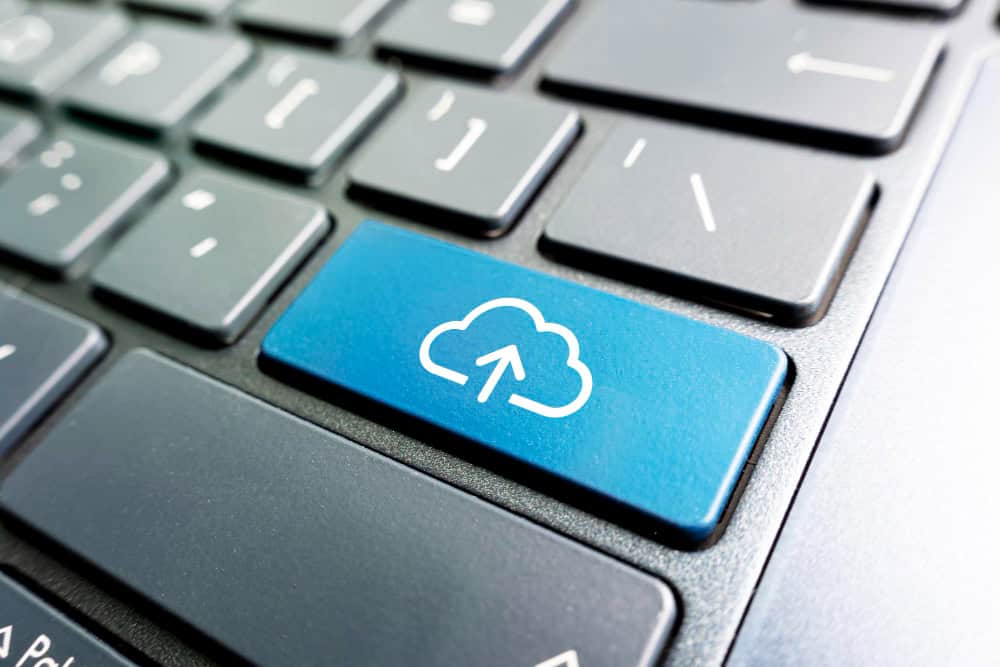The profitability of Telcos heavily relies on the functioning of billing systems. These systems are essential for the operation of the network. To ensure the effectiveness of the billing process, it is crucial to have a solution that verifies the accuracy of the billing system. This verification software enables Telcos to accurately charge customers for the services they have utilised. When this is managed effectively, it will positively enhance revenue assurance, customer satisfaction, and profitability. Let us unpack the importance of billing systems below.
Table of Contents
Toggle
Billing Overview
For Telcos, understanding the significance of billing is essential. Billing involves calculating a customer’s owed amount, but in the Telecommunication industry, it becomes more intricate due to the various factors it needs to consider. Billing affects every aspect of the Telco business, from operational levels to overall customer experience. The billing process often involves several key steps, which include:
- Service Usage Tracking – Telcos track the usage of their services for each customer. This includes the duration of voice calls, the number of text messages sent, and the amount of data used for internet services.
- Rating – The usage data is then processed and rated based on the applicable pricing plans and tariffs. Different services may have different rates, and these rates are applied to calculate the charges for each service.
- Invoice Generation – Once the services are rated, the billing system generates invoices for each customer. Invoices typically detail the services used, their associated charges, any applicable taxes, and other relevant information.
- Delivery of Invoices – Invoices are then delivered to customers through various channels, such as mail, email, or through an online customer portal. The delivery method depends on the customer’s preference and the telecom operator’s policies.
- Payment Collection – After receiving the invoice, customers are expected to make payments within a specified period. Telcos provide various payment options, including credit/debit card payments, direct debit, and other electronic payment methods.
- Account Management – Billing systems also play a role in managing customer accounts. They keep track of payment histories, outstanding balances, and other relevant information to ensure accurate billing and address any customer queries or disputes.
Effective billing systems are crucial for telecom operators to ensure accurate and timely revenue collection, maintain customer satisfaction, and comply with regulatory requirements. Additionally, billing systems may integrate with other systems, such as customer relationship management (CRM) and network management, to streamline overall operations and enhance the customer experience.
The Complexities of Billing in Telecommunications
The key to the success of the Telcos billing system is that the system needs to consider various network usage data elements to ensure provisioning, billing, usage, and rating accuracy. This includes capturing usage records, which are usually in the form of Call Detail Records or CDRs, charging data records, network traffic measurements, rating consumption, pricing, taxes, discounts, tariffs, etc. With this data, Telcos can correctly invoice customers with the right amount based on their network usage.
The above is just one element of billing that Telcos need to manage. Telcos must also effectively manage pricing models, billing configuration data, billing cycle schedules, event triggers, billing delivery channels, audit settings, etc. They also need to cover functions related to payment tracking and processing, correspondence between payments and used services, managing credits, etc.
From the above, it is clear that the process of billing customers is quite complex. This is especially true when you consider that if billing is not managed efficiently, Telcos will not be able to bill customers correctly, identify problems related to customer experience and uncover issues surrounding revenue leakage, which ultimately impact profitability and business growth.
Types of billing
There are three specific types of billing within the Telecommunications industry. Each comes with its own benefits and uses. These include the following:
- Offline Charging – this billing type allows subscribers to consume the service without an upfront balance check or balance reservation. All event data is read from CDR/EDR files after the events have occurred. The event data is then processed, rated, and charged. The usage charges appear on the invoice/bill of the subscribers, and if subscribers are not paying their bills to their credit limit, they can consume the services and keep on paying.
- Real-time Charging – this billing type utilises an Online Charging System (OCS), which is a system that can bill and rate every telecom service in real-time. It manages account balances in real-time by applying rates and tariffs to each event generated by a customer-initiated session. It is an advancement of the Offline Charging System (OFCS) and can be used for prepaid and postpaid services. Real-time rating and charging are becoming more prevalent in the Telecommunications industry as they provide more flexibility and customisation for the subscribers and better control and monitoring for the Telcos, which helps to prevent fraud and optimise revenue. With this billing type, Telcos can dynamically rate and charge for events in real-time and maximise their revenue potential, as they can charge more for peak hours, high-demand areas, or premium services and offer discounts or incentives for off-peak hours, low-demand areas, or basic services.
- Convergent Charging – Convergent charging integrates the charging and common management of users for various types of services like mobile telephone, fixed telephony, broadband and TV into a single platform. Converged charging is a process where online and offline charging are combined. This method of charging provides a better customer experience as it enables Telcos to offer and charge for bundled services and multi-play service offerings while creating a single bill that transparently reflects all customer consumption. Convergent charging can be done for online or offline rating systems.
The Benefits of Having a Solution to Verify Your Billing System
With all the complexities of managing billing and the types of billing services on offer,, it is no wonder that Telcos are utilising technology and software to make this process easier to manage. Telcos are implementing solutions that cross-check and verify these billing systems. How does this kind of technology make this possible? The answer lies in the benefits below:
- Compare Billing CDRs and Network Usage CDRs – This type of system can analyse billing CDRs from the rating system and match those with network usage CDRs to provide a consolidated view of network data usage and what is being billed. This will also allow for the identification of detailed trends and patterns with regard to rated usage. With this insight, Telcos can bill customers correctly and accurately based on usage.
- Reduces Errors Associated with The Billing Process – This technology naturally reduces the chance of human error in billing. A software solution specifically built for this purpose can dramatically reduce errors, positively impact customer experience, assist with cash flow, and get customers to pay without needing to query their accounts.
- Provides Detailed Billing Data – With detailed billing data, Telcos can identify discrepancies related to a customer’s account and provide them with feedback faster and more efficiently, enhancing customer experience.
- Empowers Management With Reliable Data – A fit-for-purpose billing verification system provides management with the visibility and insights needed to make informed decisions related to budgeting, forecasting, profitability and more.

Billing Verification Made Easy With CDRlive
Adapt IT Telecom’s CDRlive platform is a powerful piece of technology that simplifies the complexities of a Telcos billing system and ensures revenue assurance.
This specialised software transforms raw CDRs into valuable billing insights through reports and analytics that you can access in almost real-time. These analytics assist in detecting billing anomalies, under charges, and excess charges and ensuring that customers are billed for what they are using. This information will also assist in the management of customers’ data use. For example, suppose they continue to utilise excess data. In that case, you can adjust their plans to account for this, enhancing the customer experience and reducing the shock of large, unexpected bills. The CDRlive analysis of billing call records also ensures that customers are on the right plans with the proper inclusions and bundles.
Armed with these insights and the ability to drill down into customer specifics, you, as a Telco, can identify elements related to revenue leakage, data usage, billing discrepancies and more. With this foresight, you can take steps to rectify any identified problems and issues to reduce revenue loss.
CDRlive Rating and Billing System Validation Case Study
This CDRlive technology was recently implemented by a Telco Operator in Africa with 2.6 million active subscribers. This Telco was specifically looking for a platform that would enable them to quickly identify, view, navigate, and investigate billing-related revenue leakage.
The Adapt IT team set to work and utilised CDRlive to identify discrepancies between the service catalogue (what services were being sold) and the online charging system. As part of the solution, the client required re-rating for verification, which was made possible by the Tarriflive module of the solution.
The Tarifflive module (first released in 2006) is an analytical re-rating engine and Tariff or Price plan comparison module that also evolved from the CDRlive data model and delivers an easy-to-use tool for rating and pricing analysis. This module mimics the operator billing system, the operator’s plans and tariffs are configured in the tool, and then network CDRs or billing CDRs are used to re-rate the usages. In this case, customers were being charged less than they should be for their purchased services. This resulted in the Telco experiencing revenue leakage. Other benefits that the client experienced with the implementation of this solution included:
- Billing Verification and Revenue Assurance – The backend Tariff engine enables the RA team to perform independent billing cycle processing to cross-validate the billing system output for price plan accuracy. Operators have made remarkable discoveries of leaks, thereby recovering millions in lost revenue.
- What-if Analysis – Product groups can perform price plan modelling for competitors’ price plans to rate and compare bills. Sales Teams use these comparisons used to win back high-value Customers such as corporate and government accounts.
- Design New Price Plans – Tarifflive has a very sophisticated hierarchical price plan builder that is used to construct new complex price plans very quickly. New price plans can inherit all the attributes from parent plans, facilitating small plan changes. Once the price plans have been tested in Tarifflive using real accounts, they can be deployed to the billing system.
- Custom Price Plan – Custom price plans can be built for large accounts quickly. The Sales Teams provide full feedback to Customers on potential savings from these plans based on their specific usage.
- Fraud Investigation – Users can see both rated and usage event records at the most granular detail, so it is easy to pinpoint the fraud pattern and the impact on revenue.
- Geo-Demographic Data – Tarifflive places usage events on a Map as a visual output of Customer-level usage to highlight network coverage based on that Customer’s usage.
Conclusion
From the above, it is clear that billing plays a significant role in the success of a Telco, especially where revenue assurance is concerned. With the right verification billing software in place, like Adapt IT Telecoms CDRlive technology, Telcos can simplify the complexities of customer billing, enhance customer experience, and ensure revenue assurance. The question that you, as a Telco, now need to ask is, do you have a solution to cross-check your billing system, and is it empowering you and your business’s success?
Explore the Power of CDR

With close to 20 years of senior leadership experience in the Information Technology and Client Outcomes space, I am well placed to provide extensive knowledge and expertise to any major organisation, where I can provide value, understanding, strategic outcomes, and growth opportunities with regularity. My ability to understand customer and client expectations and requirements, and to deliver key outcomes in alignment with market expectations has ensured consistent growth for all departments I have worked within in my career.





